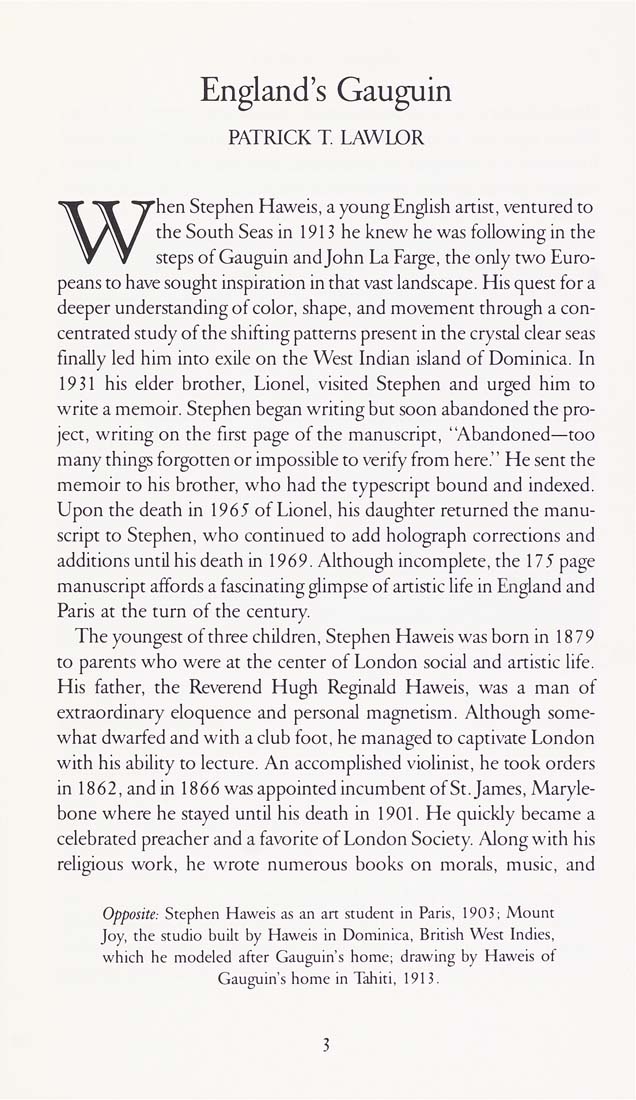Columbia Library columns (v.38(1988Nov-1989May))
(New York : Friends of the Columbia Libraries. )
|
||
|
|
|
|
| v.38,no.2(1989:Feb): Page 3 |

Wl England's Gauguin PATRICK T LAWLOR Then Stephen Haweis, a young English artist, ventured to the South Seas in 1913 he knew he was following in the steps of Gauguin and John La Farge, the only two Euro¬ peans to have sought inspiration in that vast landscape. His quest for a deeper understanding of color, shape, and movement through a con¬ centrated study of the shifting patterns present in the crystal clear seas finally led him into exile on the West Indian island of Dominica. In 1931 his elder brother, Lionel, visited Stephen and urged him to write a memoir. Stephen began writing but soon abandoned the pro¬ ject, writing on the first page of the manuscript, 'Abandoned—too many things forgotten or impossible to verify from here." He sent the memoir to his brother, who had the typescript bound and indexed. Upon the death in 1965 of Lionel, his daughter returned the manu¬ script to Stephen, who continued to add holograph corrections and additions until his death in 1969. Although incomplete, the 175page manuscript affords a fascinating glimpse of artistic life in England and Paris at the turn of the century. The youngest of three children, Stephen Haweis was born in 1879 to parents who were at the center of London social and artistic life. His father, the Reverend Hugh Reginald Haweis, was a man of extraordinary eloquence and personal magnetism. Although some¬ what dwarfed and with a club foot, he managed to captivate London with his ability to lecture. An accomplished violinist, he took orders in 1862,andin 1866 was appointed incumbent of St. James, Maryle- bone where he stayed until his death in 1901. He quickly became a celebrated preacher and a favorite of London Society. Along with his religious work, he wrote numerous books on morals, music, and Opposite: Stephen Haweis as an art student in Paris, 1903; Mount Joy, the studio built by Haweis in Dominica, British West Indies, which he modeled after Gauguin's home; drawing by Haweis of Gauguin's home in Tahiti, 1913, |
| v.38,no.2(1989:Feb): Page 3 |







